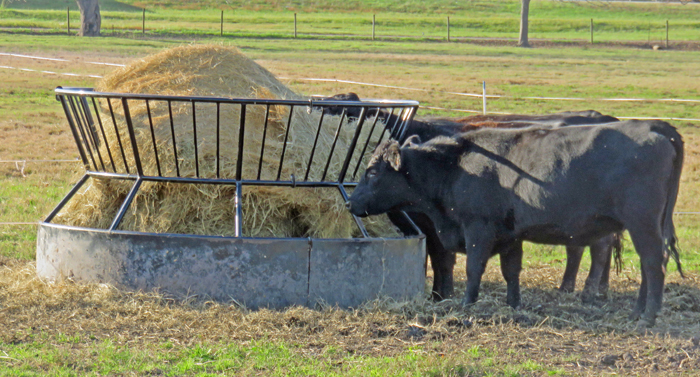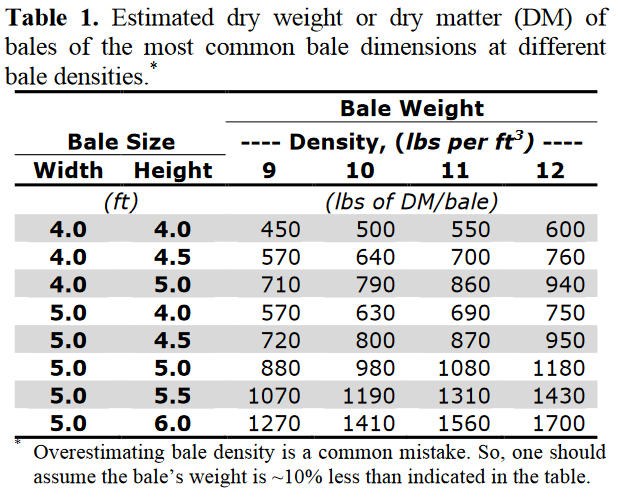
Hay is the most expensive feed for livestock because of the shear volume needed when pastures are dormant. Photo credit: Doug Mayo
Glenn Selk, Oklahoma State University Emeritus Extension Animal Scientist
Estimating forage usage by cows is an important part of the task of calculating winter feed needs. Hay or standing forage intake must be estimated in order to make the calculations. Forage quality will be a determining factor in the amount of forage consumed. Higher quality forages contain larger concentrations of important nutrients so animals consuming these forages should be more likely to meet their nutrient needs from the forages. Also cows can consume a larger quantity of higher quality forages.
Higher quality forages are fermented more rapidly in the rumen leaving a void that the animal can re-fill with additional forage. Consequently, forage intake increases. For example, low quality forages (below about 6% crude protein) will be consumed at about 1.5% of body weight (on a dry matter basis) per day. Higher quality grass hays (above 8% crude protein) may be consumed at about 2.0% of body weight. Excellent forages, such as good alfalfa, silages, or green pasture may be consumed at the rate of 2.5% dry matter of body weight per day. The combination of increased nutrient content AND increased forage intake makes high quality forage very valuable to the animal and the producer. With these intake estimates, now producers can calculate the estimated amounts of hay that need to be available.
Using an example of 1200 pound pregnant spring-calving cows, lets assume that the grass hay quality is good and tested 8% crude protein. Cows will voluntarily consume 2.0% of body weight or 24 pounds per day. The 24 pounds is based on 100% dry matter. Grass hays will often be 7 to 10% moisture. If we assume that the hay is 92% dry matter or 8% moisture, then the cows will consume about 26 pounds per day on an “as-fed basis”. Unfortunately we also have to consider hay wastage when feeding big round bales. Hay wastage is difficult to estimate, but generally has been found to be from 6% to 20% (or more). For this example, lets assume 15% hay wastage. This means that approximately 30 pounds of grass hay must be hauled to the pasture for each cow each day that hay is expected to be the primary ingredient in the diet.
After calving and during early lactation, the cow may weigh 100 pounds less, but will be able to consume about 2.6% of her body weight (100% dry matter) in hay. This would translate into 36 pounds of “as-fed” hay per cow per day necessary to be hauled to the pasture. This again assumes 15% hay wastage. Accurate knowledge of average cow size in your herd as well as the average weight of your big round bales becomes necessary to predict hay needs and hay feeding strategies.
Big round hay bales will vary in weight. Weighing a pickup or trailer with and without a bale may be the best method to estimate bale weights. In lieu of that opportunity, forage specialists at the University of Georgia have published other calculations that can be helpful in estimating hay bale weights as seen in the chart below. Here is a link to their full discussion: UGA: WHAT DOES A ROUND BALE WEIGH?
- Where Did That Weed Come From? The Importance of Weed Management Practices and Timings - December 5, 2025
- Sustainable U.S. Peanuts Kicks Off 2025 Crop Enrollment - December 5, 2025
- Grant Opportunity Available to Attend American Forage & Grassland Council Conference, Ashville – January 12-15 - December 5, 2025

